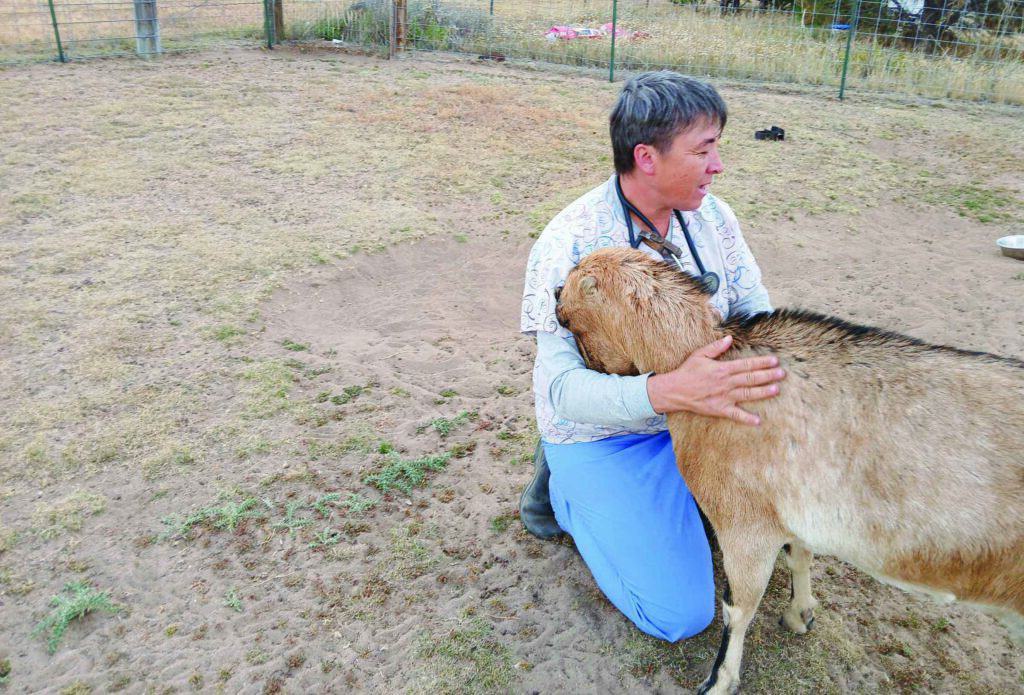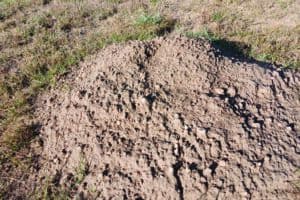Longtime local journalist Bill Radford and his wife, Margaret, live on 5 acres in the Falcon area with chickens, rabbits, dogs, cats, a flock of parakeets, goats and two horses. Contact Bill at billradford3@gmail.com.
One vet’s Niche
By Bill Radford
Some of you may recall the story of Chica the goat, who was suffering from an infection, diagnosed as mastitis (an infection of the udder). The diagnosis came after we stuffed her into the back of our Subaru Forrester to transport her to an equine veterinary practice, where they had a vet with some experience with goats.
When the infection continued to linger, my wife found a specialist who would pay a house call. That vet is Dr. Signe Balch, who is based in Larkspur but whose practice is totally mobile. And Falcon is one of the areas she regularly serves.
Balch specializes in camelids (llamas and alpacas) and small ruminants (goats and sheep). Chica’s infection seemed to have finally retreated when Balch paid a visit, but that visit yielded an underlying diagnosis: precocious udder. That’s when a goat’s udder fills up with milk even though the goat has not been bred. And it can become a chronic condition.
“There’s not a lot we know about the disease,” Balch says. That’s partly because so little is known about goats in general, she said.
“They are definitely, in the United States, one of the understudied livestock populations. So we have a lot of catching up to do with a disease like this.”
A mild version of precocious udder might require only observation, she said. But it can also progress to the point where the affected udder gets so swollen that it drags on the ground, leading to discomfort for the goat and an increased risk of infection.
“There’s an element to it that appears to be hormone-related,” Balch said.
“What we try to do is interrupt the hormone cascade that might be causing the problem.” Hormone therapy may help for a time, she said, but doesn’t appear to be a long-term solution. Milking doesn’t appear to help as it doesn’t permanently drain the udder, which remains under “abnormal stimulation.” Plus milking opens up a doorway for bacteria to get in, she cautioned.
One solution: spaying the goat, thus eliminating the reproductive organs that appear to be the source of that “hormone cascade,” or a mastectomy, so there would be no tissue for the hormones to act on. Either would require a trip to the Colorado State University Veterinary Teaching Hospital in Fort Collins; neither is a procedure that would be safe for Balch to routinely do in the field.
“My long-term dream would be to have something like a surgical center down here to do stuff like that,” Balch said, but she doesn’t see that happening anytime soon.
Transporting Chica to Fort Collins would be a much bigger deal than the 20-minute trip we made to the equine vet, so that’s not happening anytime soon, either. For now, we’ll go with observation. But at least we’ll have Balch to call on.
Hers is an unusual niche — which is why she chose it. And her upbringing in Kansas gave her some initial experience.
“I grew up on a sheep ranch, so I’ve been around sheep and goats since I can remember,” she said. When she moved to Colorado as a vet, she was looking for a focus that she would enjoy and that was needed.
“There are not very many veterinarians who want to work on small ruminants and probably fewer who want to work on alpacas and llamas,” Balch said. “So I put my shingle out and said I will take all those animals that no one else wants to deal with.”
She did an internship at an equine hospital in Kentucky, so she knows her way around horses, “But, there are quite a few equine vets in the area, so I chose not to compete with them,” she said. “If you have a horse question or your horse needs a vaccination, I can do that, but I’m not set up for bigger issues.”
And chickens? ”I try to do what I can,” Balch said. “It’s not an area of medicine that I was trained on a lot. I do my best to have some knowledge.”
She started her practice 15 years ago. It is mostly hobby farms, like ours, that she tends to in the Falcon area. There are routine visits, such as vaccinations; emergency situations often are a result of dog attacks. In an “urban-rural interface” like Falcon, she said, dog attacks are more common than attacks by wildlife.
She has her own menagerie at home: “That’s kind of obligatory if you’re a veterinarian,” she noted. Her larger critters include alpacas and sheep. “I’m down to my last horse, unfortunately.”
When she’s not at home, she’s on the road making her rounds.
“I do the job because I get a lot of fulfillment from it,” she said. “That’s not to say it isn’t hard, that’s not to say that some days aren’t ones you want to forget ever happened. But it’s so nice to meet not just the animals out in my community, but also the people, and build that sense of community.”






